I WANT
RELATED LINKS
I WANT
RELATED LINKS
RELATES LINKS
I WANT
RELATES LINKS
Services
Related Links
Use and Management of Cookies
We use cookies and other similar technologies on our website to enhance your browsing experience. For more information, please visit our Cookies Notice.
- Personal Banking
- Stories & Tips
- BUSINESS MAKER
- The Power of Storytelling in Business
- Personal Banking
- ...
- The Power of Storytelling in Business
The Power of Storytelling in Business
01-10-2020
The Power of Story Telling in Business
How do you communicate to make your brand stay in customers’ hearts? How can customers recall your brand and end up purchasing your products? Why do we enjoy reading an extremely long story? How can we tell a memorable story? A good “Storytelling” can change the alphabet into a powerful and unforgettable story. Let’s experience some insights from professional storytelling, Dr.Pat -Dr.Utain Boonorana or Jaemor, a Content Creator of ‘Dr.Tood and 2-look image’, and Khun Pert – Pongpiti Phasukyud, a Content Creator of Ad Addict.
Why Storytelling is Important for SME
Khun Pert started with an interesting question ‘How many ads do people see in a day?’ The study in 2007 found that we see about 5,000 ads daily. It’s been 13 years now so we could have seen double which could be ten thousand ads. That’s why storytelling matters to SME so SME needs to find ways to attract consumers. A good approach is to share a good story through creative communication to win over customers’ hearts. Most people tend to forget what they say and what they do but not how they feel. Great storytelling is key to help a brand draw their attention and can sit in their hearts.
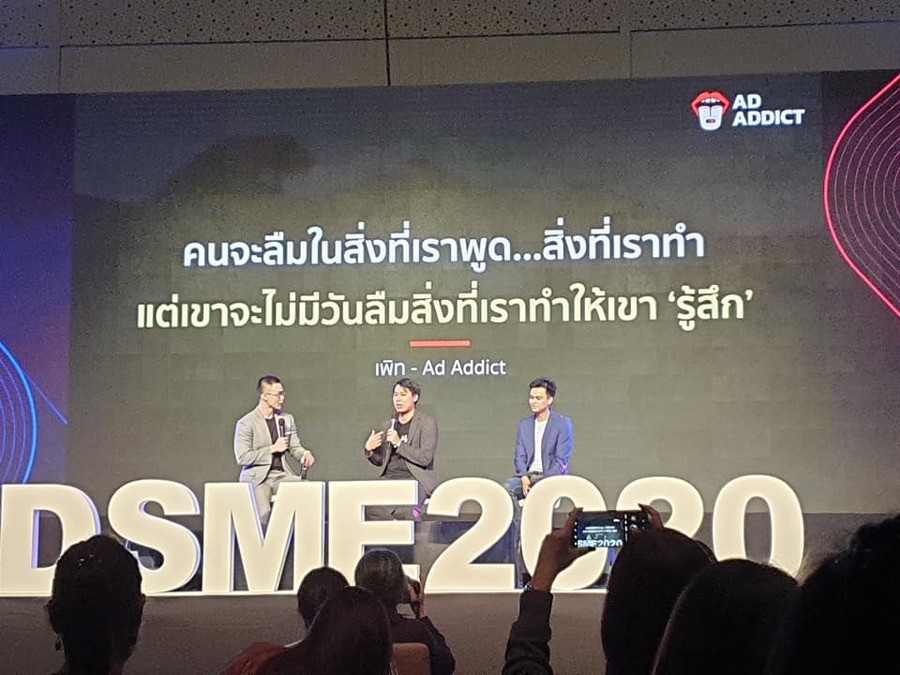
Dr.Pat asked an easy question ‘How many medium tone consonants are in Thai? Everyone can remember “ไก่จิกเด็กตาย เด็กตายบนปากโอ่ง” and nobody memorizes the alphabets because the story is easier to recall. The research found that we learn by memory and record it as a story. That means we should communicate with the Story, not Factsheet as it will directly penetrate to customers’ brains and their perception. Many SME entrepreneurs might have heard that storytelling leads to customer purchase and business growth. In fact, Dr.Pat said there’s no storytelling like that. The best thing about storytelling is to penetrate to customer memory and memory will turn to compelling power. Another example: when we ask people to share a fairy tale ‘Little Red Riding Hood. Can anyone do that? Most people can tell that story even though can’t remember when they first heard it. It’s like remembering medium tone consonants as a story will become an experience. If people recall us but don’t buy our products, they will buy them in the future. Anyway, when they can’t recall us while they want to buy something, that means we are not their choice. Therefore, the role of storytelling is to attract people and make them know us, and memory will finally do its job. Dr.Pat raised few examples about advertising.

An MBA course in a university. This ad shows a woman’s hand with a man’s hand wearing a ring to her finger, and presents a copy “MBA gives you more than you expected”. Much has been said that if you want a girlfriend or boyfriend, join an MBA. That’s why this story is adapted to create an ad. Selling by a story helps present an experience that anyone can have, and we do that by applying a real Insight for creating a story.

Khun Pert elaborated that we create a story to release its content into people’s minds so that they can feel emotionally engaged and remember us. The key is an Insight that many people misunderstand that it’s a Pain Point behavior or a Solution. In fact, they're something beyond that. For example, Acne products. We tend to perceive that an insight of those who have acne problems is unconfidence. However, Khun Pert pointed out the reason they’re not confident because they want to do something next. If the acne disappeared, they could post a nice look on Instagram, and then they may gain Likes from their friends, or someone would have a crush on them just like the ad that reflects something deep down people’s mind to present to target customers. If you use your products or services as a Solution instead of mentioning only the acne performance, you can hit the target then.
Easy Ways to Search for Insight
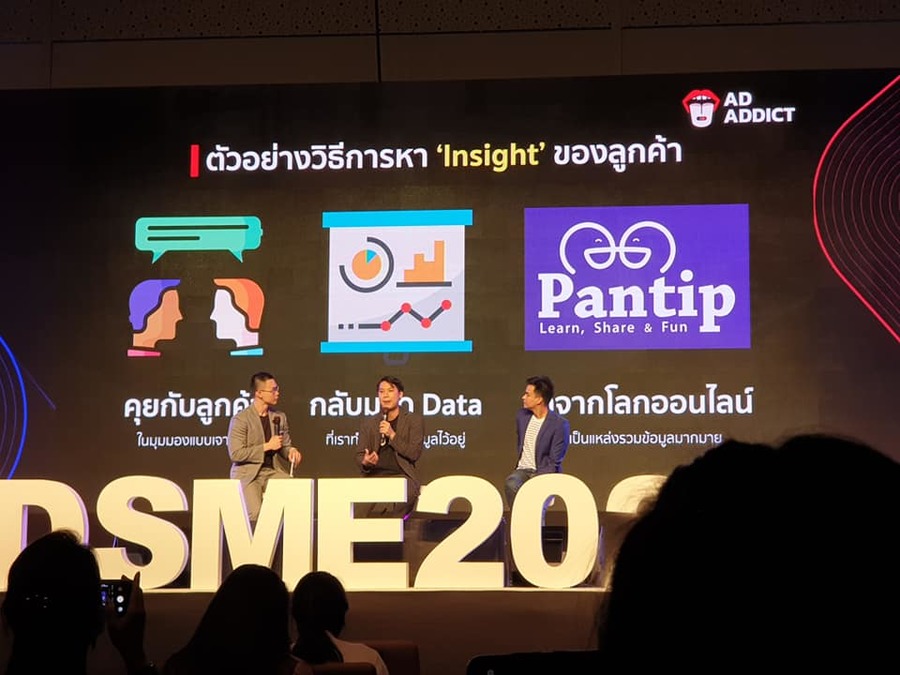
- Talk to customers and find out who they are, what they need. What are their goals and challenges?
- Review all online content and consider which content is Insight and can be extended for other purposes. For example, Twitter is a trending source that updates you what is the talk of the town at present and helps you create a story tied in with your products.
- Follow online communities like Pantip, Facebook groups to search for the stories of people in the news or celebrities, study their ideas on several issues, and monitor what they’re talking about our brands. Use Social Listening as it’s a good tool to track our market penetration.
- Start Communicating with Storytelling
- Don’t start with creating advertising. When marketing the products, people always think about clips, viral videos,s or film advertising. We suggest that you create a Story from your brand and products without advertising but you’re able to sell those products. Khun Pert mentioned a Thai ice cream brand ‘Guss Damn Good’. This brand was established from the inspiration of the Founder who had an impressive experience while having ice cream in Boston and wanted to create his homemade brand in Thailand. He used Storytelling with his ice cream and named one of its flavors ‘Don’t give up #18’. That’s the only thing he did!
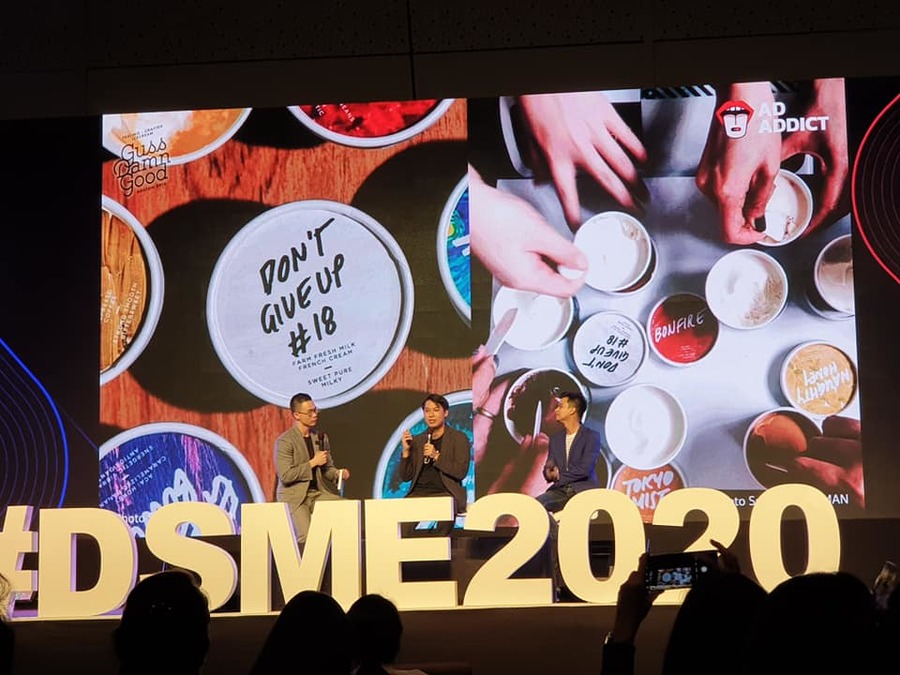
People who heard about that ice cream started wondering if there’s a story behind that peculiar name. The staff told us that the Founder wanted to make the same flavor as he had at Boston. He mixed milk and cream as a base recipe with trial and error. The taste is close to the original on his 18th trial and that is the history of ‘Don’t give up #18’. People who have that ice cream can feel some experience. This is an example that Khun Pert realizes that SMEs shouldn’t start with film advertising because advertising nowadays doesn’t always limit to film. You’d better start with your brand or products and the message and products must be well-matched. Your products must be high quality and in line with their messages; otherwise, you’ll get the negative impact of deceiving customers.
Khun Pert notices that many SMEs have faced challenges when creating Storytelling for their products as products are not self-manufactured but ordered from others and then placed brand stickers on them. When you order products from OEM (Original Equipment Manufacturer), how can you tell the story? Would you tell your story? Some people were laid off or wanted to run a business to get rich, so they don’t have any story to share. Khun Pert recommended another 4 issues that can be your source of storytelling.

- Direct telling: The product plays the Hero like BAYGON with its slogan “Protect Your Loved Ones” which means to protect you from mosquitoes.
- Indirect telling: The product plays the Opposition like CHAINDRITE. The product kills bad guys such as termites, mosquitoes, and insects.
- Motto: Presenting a Vision as Johnnie Walker Keep Walking. In fact, the product has nothing to do with that motto, but the brand has committed to its vision. Once anyone says Keep Walking, Johnnie Walker will promptly pop up. Another example is Regency which we have never seen its brand and products in the advertising. When people see beautiful ladies are dancing, they suddenly know that it’s Regency advertising. If our motto coincidentally matches the product, we will hit that product motto off right away. Motto: Presenting a Vision as Johnnie Walker Keep Walking. In fact, the product has nothing to do with that motto, but the brand has committed to its vision. Once anyone says Keep Walking, Johnnie Walker will promptly pop up. Another example is Regency which we have never seen its brand and products in the advertising. When people see beautiful ladies are dancing, they suddenly know that it’s Regency advertising. If our motto coincidentally matches the product, we will hit that product motto off right away.
- Impact value: Sharing an experience gained from our products or services like an insurance company, FWD, which presented extreme sports in its advertising to promote adventurous experiences with worry-free ones once you buy their insurance. If your brand has nothing remarkable like Selling fried bananas. We may also communicate with an Impact value by telling the audience that ‘If you gain weight, our yummy fried bananas make that happen”.
New Trends in Storytelling
- Think about target first and never start with any communication channel. Look around how people spend their lifestyles as there’ll be no boundary between online and offline or traditional platforms in the future. Consumers don’t mind what type of media they consume the content.
- Communicate with sincerity and reality without fancifulness, especially at this uncertain timing and limited budget. Creating content with a heartfelt concept is more effective and it’s now the popular trend in Thailand and global. No more big production!
- Create value to society and don’t just make profits. Some products have simple features but they give value to society. For example, sharing some proceeds from sales to support society. Or, buying a pair of shoes, and the brand will donate another pair to an underprivileged child.
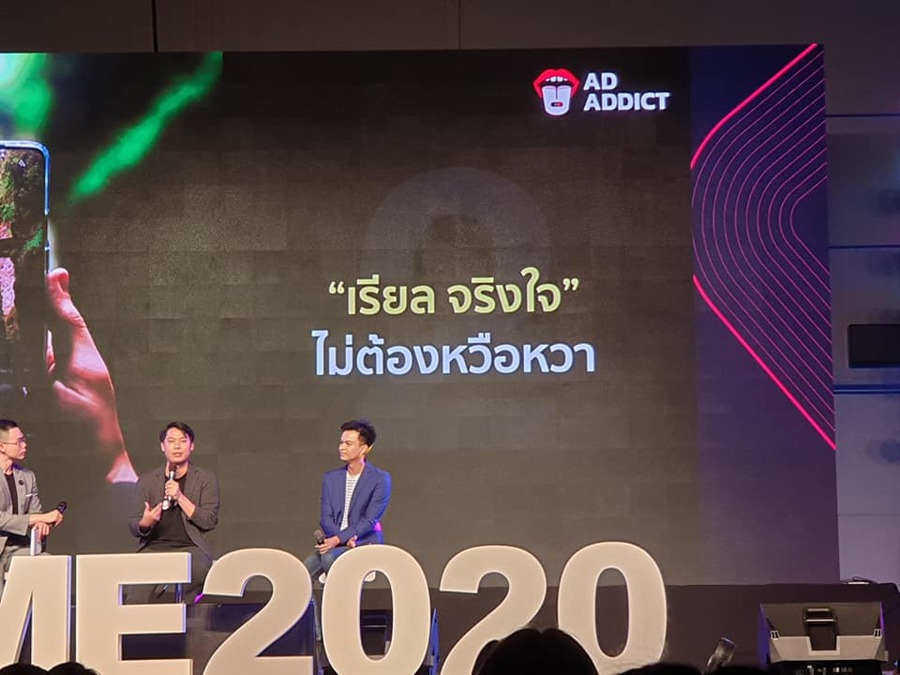
The Art of Storytelling
Storytelling consists of 3 types of rhythm.
- Begin with 3 catchy lines like Facebook which shows content on the first 3 lines.
- Tension and conflict are present in the middle part of the story
- A stunning ending is key.
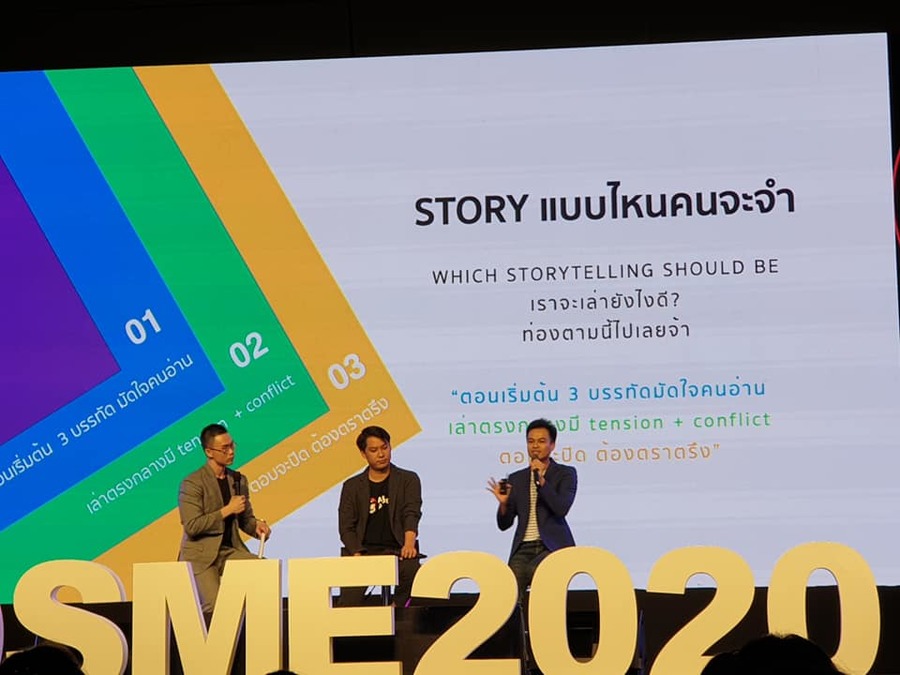
insight and create an experience for them honestly. Apart from telling product benefits, SMEs can express their belief in something and their attitude towards society. Also, study people’s behavior to consider which part of your story fits them and in a timely manner.
present information related to us. A high-quality product is base and reflects good storytelling. There’s no fixed rule for marketing and communication. Take an action by yourself to get lessons learned until you discover your own formula.
Source: “The Power of Storytelling in Business” a seminar topic in Digital SME Conference Thailand 2020, September 15, 2020
